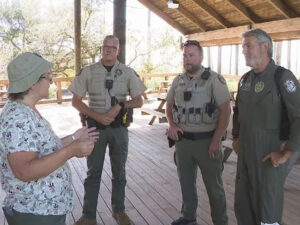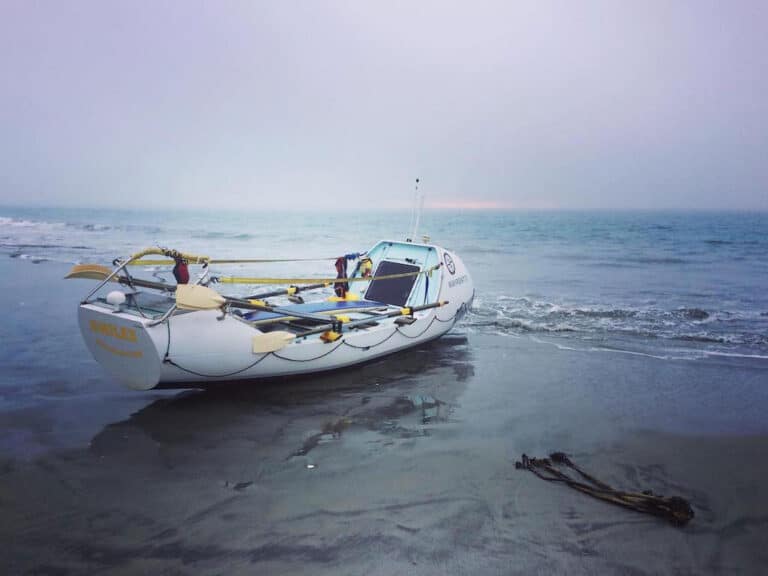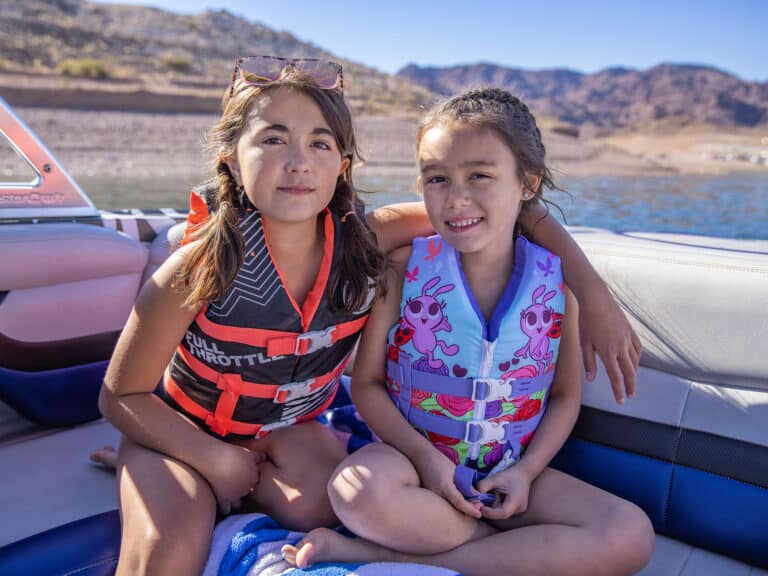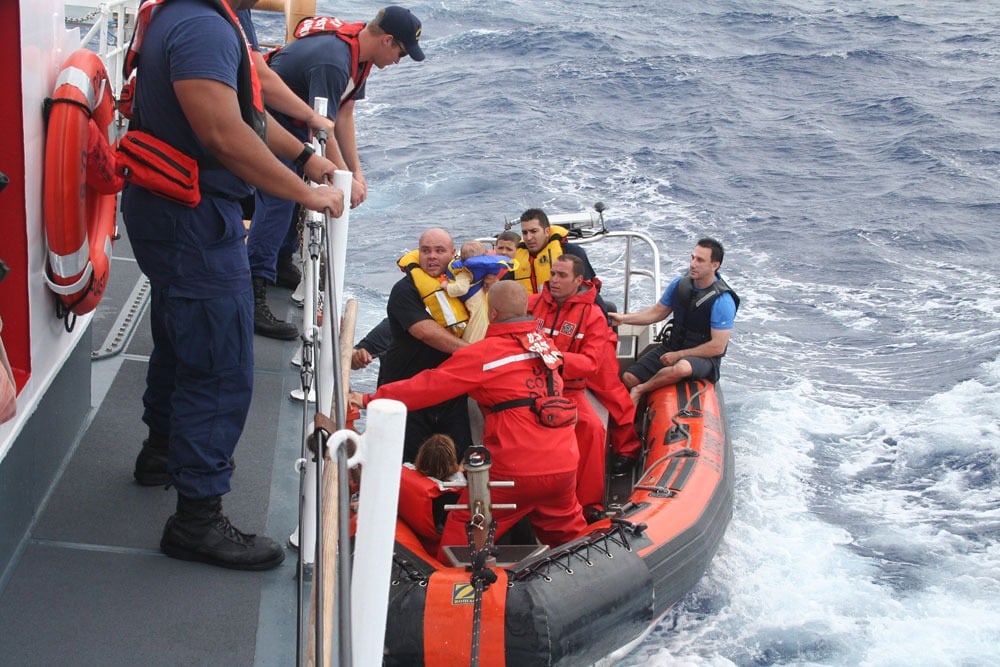
When lives are on the line – if your boat is on fire or sinking rapidly with people on board, for example, or someone needs immediate medical assistance – you want every available resource dispatched to your position. A Mayday call will bring that kind of help.
The U.S. Coast Guard will respond immediately to your Mayday call, and may also notify state and local search and rescue units in your vicinity. The Coast Guard will also transmit an Urgent Marine Information Broadcast over marine-band VHF-FM radio Channel 16, notifying all vessels in the area of your emergency. In many cases, a nearby Good Samaritan will be first on the scene to render assistance.
A Mayday should be transmitted via marine-band VHF-FM radio Channel 16 in coastal and inshore waters, or 2182 kHz MF/SSB if farther at sea. The term is derived from the French venez m’aider, meaning “come and help me,” which is exactly what the Coast Guard and fellow mariners will do when they receive your Mayday call.
Emergencies can go from bad to worse in seconds, so try to get as much information across in as little time as possible. Start the transmission with the word “Mayday” repeated three times, followed by the name and number of your vessel and its position. If you have a marine GPS, relate the latitudinal and longitudinal coordinates. If not, state your distance and magnetic or true bearing from the closest navigational landmark. If time allows, you can also relay your departure point, departure time and the speed at which you were traveling. All of these can help rescuers locate you.
Once you’ve made contact and given your information, Coast Guard Search and Rescue planners will keep you advised of their actions and give you an estimate of when rescue units will arrive on the scene. If you have a medical emergency, assign someone to monitor the radio from the time you make the call until the rescuers are on the scene. The Coast Guard will direct you to the nearest safe haven and advise you on what actions you should take in the interim.
The Rescue Coordination Center or local Coast Guard station may deploy a helicopter, rescue vessel or nearby commercial ship, depending on your location, local weather, availability of crew and equipment and nature of the emergency.
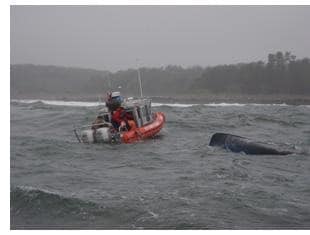
When the Coast Guard receives your Mayday, the Mission Coordinator will determine your degree of danger by considering several factors: the nature of your situation and the gear on board your vessel (first aid kit, food, water, life jackets), the accuracy of your position, the tide, visibility, current and sea conditions, present and forecasted weather, special considerations (such as the age and health of those on board), whether you have reliable communications, the degree of fear in those on board, and the potential for the situation to deteriorate further.
If a helicopter is dispatched, be sure to secure all loose items on deck, as helicopter rotor wash is very powerful and unsecured items may turn into flying projectiles. Lower and secure any sails, remove any equipment that may snag the line attached to the rescue basket, and make sure everyone is wearing a life jacket. The helicopter is likely to approach your boat on the port stern quarter, because that gives the pilot optimal visibility from the cockpit. So unless instructed otherwise, set your course so that the wind is 45 degrees off your port bow. Remember, never shine a light or strobe directly toward the helicopter, and never fire flares in the vicinity of the helicopter. Wait for the rescuers to tell you what to do, and then do as they say. In any emergency situation, listening may be your most important skill.
The Coast Guard recently completed a major modernization of its command, control and communications infrastructure. The new system, known as Rescue 21, vastly improves the Coast Guard’s ability to save lives and property by harnessing global positioning and other advanced communications technology. No new equipment is needed for you to benefit from Rescue 21, but you can help improve response time by upgrading to a Marine-Band VHF-FM radio equipped with digital selective calling (DSC). When properly registered with a Maritime Mobile Service Identity (MMSI) number and interfaced with GPS, the DSC radio signal transmits vital information – vessel name, position, owner/operator’s name and the nature of the distress (if entered) – with one push of a button.
The U.S. Coast Guard is always ready to render aid to boaters facing extreme and imminent danger. Your best bet, however, is to reduce the risk of finding yourself in a dire situation in the first place. Keep your vessel’s hull, motor and on-board equipment in top condition. At the start of the boating season, get a Vessel Safety Check, offered free by your local U.S. Coast Guard Auxiliary, United States Power Squadron or state boating agency. Take a basic seamanship course and additional instruction as necessary to ensure that your boating skills match the requirements of your vessel. Finally, insist that everyone on board wear a life jacket at all times on the water. Life threatening emergencies can happen in a heartbeat. Having a life jacket on increases everyone’s chances of survival.
How to broadcast a MAYDAY emergency call
Make a Mayday call if a vessel or person is in grave and imminent danger and immediate assistance is required. For lesser emergencies, a “Pan-Pan” or “Sécurité” may be appropriate.
• Check that your VHF radio is on and high power setting is selected:
Select Channel 16 (or 2182kHz for MF)
• Press the transmit button and say slowly and clearly:
“MAYDAY, MAYDAY, MAYDAY”
“THIS IS… ”
(say the name of your vessel 3 times. Say your MMSI number and call sign)
“MAYDAY, THIS IS…”
(say name of vessel)
“MY POSITION IS…”
(latitude and longitude, true bearing and distance from a known point, or general direction)
“I AM…”
(say nature of distress e.g., SINKING, ON FIRE)
“I REQUIRE IMMEDIATE ASSISTANCE”
“I HAVE…”
(say number of persons on board PLUS any other useful information – such as sinking, flares fired, abandoning to liferaft)
“OVER”
• Now release transmit button and listen for reply
• Keep listening to Channel 16 for instructions
• If you hear nothing then repeat the distress call
Vessels with GMDSS equipment should make a MAYDAY call by voice on Ch 16 or MF 2182 kHz after sending a DSC Distress alert on VHF Ch 70 or MF 2187.5 kHz
DSC Radio Emergency Procedure
• In an emergency, press the DSC radio’s red button for 15 seconds and then transmit a voice message on Channel 16.
• Prepare for sending/receiving subsequent distress traffic on the distress traffic frequency (2182 kHz on MF, Ch16 on VHF)
• NOTE: The nature of distress can be selected from the DSC radio receiver’s menu.
Edits by Jeff Moag/Water Sports Foundation
* * * * *
The U.S. Coast Guard is asking all boat owners and operators to help reduce fatalities, injuries, property damage, and associated healthcare costs related to recreational boating accidents by taking personal responsibility for their own safety and the safety of their passengers. Essential steps include: wearing a life jacket at all times and requiring passengers to do the same; never boating under the influence (BUI); successfully completing a boating safety course; and getting a Vessel Safety Check (VSC) annually from local U.S. Coast Guard Auxiliary, United States Power Squadrons(r), or your state boating agency’s Vessel Examiners. The U.S. Coast Guard reminds all boaters to “Boat Responsibly!” For more tips on boating safety, visit www.uscgboating.org.

